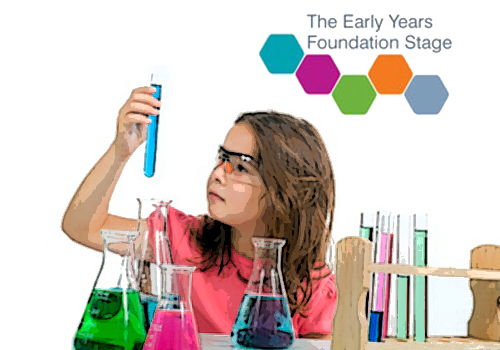School should be a place where children love to go. To make it lovable and stress-free we can do something.
1. Make an order and rules from the very beginning:
Having a classroom routine from the very first day of their school life will enable the kid to understand that school is somewhat a systematic place and this is how it is going to work. Setting up a classroom routine, with pre-school or lower primary children is very important in this aspect. Once the ways are carefully established, the children understand how to be a part of it.
One thing we must keep in mind is that the children should never feel that these are rules. Surely they will love following routines since they are not bothered about time at this early age. Saying ‘good morning’ or a Morning Prayer can be a part of this routine. The teacher should also follow the same.
Edsys introduces Smart cards for schools. It can be used for registering their entry and exit time, school bus attendance etc.
2. Bring novel thoughts and have enough fun:
Always bring some new thoughts or ideas for the class. Children love variety. If every day the teacher comes and lecturing, then evaluates and leaves the class, there is nothing new in it. The ability to learn is different in different students. So we have to bring new ideas every day. It will be a great blessing for those who have different learning abilities.
Some students like to learn things as stories, some other as rhymes and some others with pictures or drama. These are interesting methods that provide them with imagination and pleasure.
Fun can be created in the class in so many ways. It is not always singing and dancing. Saying stories, quizzes, games and chants everything can create fun in the class. This will help to make a Stress Free School Environment.
3. Always give surprises, praises and make fair evaluation:
Let them expect something that is really amazing every day. Give them gifts for their achievement and give surprises in different ways. For example, before they get into the class make some models or pictures in the classroom related to the new topic that is about to begin that day.
Also Read : 13 Innovative Trends in Educational Technology
Prepare for all the special days in every month and do activities related to that particular instant in that week. Encourage them to put forward their ideas and promote them to share it with the class.
Everyone likes positive feedback and respond well to a job that is well done. Surely the children surely the children will be pleased to hear positive comment from the teachers. Always praise them for their good deed and behavior and we can see many of the students trying to copy the same.
Make the classroom evaluation accurate and impartial. It is necessary to win the heart of the students. Tests are a part of teaching and it is to be conducted regularly but not constantly. It is to be evaluated in detail. Don’t trouble them with so many questions and test papers; let them relax and enjoy their childhood.
4. Teachers should be enthusiastic and stay motivated always:
It is really to be enthusiastic always but the smile on the teacher’s face will make the students enthusiastic. Letting them to guess what the teacher is about to begin. Catch their attention with a whistle or clap. Fast and smart movements will make them enthusiastic and energetic too.
Always try to know what the student hood feels. Refresh your mind and be a student by attending refresher courses and classes. Update our skills always and remain motivated for new class.
5. Know the students personally and be in touch with the parents:
It is a must thing to avoid stress in the classroom. If any student has any problem in following the classes or attending the classes the teacher must know it. The teacher must be aware of any kind of challenges the students facing, physically or mentally and should give an extra attention for them.
The parent-teacher communication is very important for a stress free classroom. Both teachers and parents can make use of Parent Portal for effective interaction between parents and teachers. If the children are having a troublesome family background, the teacher must know it and avoid situations in class that make the particular child miserable.
If a student is weak in any subject or there is a decline of grades for him the teacher must talk to the parents and find out the reason for it and should overcome that condition by giving him special attention.
The teacher should always be a good friend to the students. Then only they will feel free in the classroom. Otherwise, they may feel classroom as prison cell which suffocates their childhood.
6. Promote positive feeling towards school in students
When it comes to kindergarten, the students being relatively new to the school environment, find it little tough to fit in. Therefore, the first step you must take as a teacher, is to make them feel safe and comfortable. Academics is not the priority at the moment. The teachers must utilize the initial years of students in school to nurture positive feeling in them towards the school. Organize group play and other collaborative activities to develop socio-economic skills of the students. Also, teachers can utilize the time to analyze the strengths and weaknesses of the students and make plans to help them improvise. This will indeed contribute to a stress-free school environment for the students in future.
7. Tackle bullying
Bullying happens in schools and may even continue through college, thus emotionally breaking the students. Besides setting up rules to address bullying, it’s important to encourage students to brave up and report in case they are bullied. Also, schools can hold classes or sessions to help students to identify the different signs of bullying and to make them aware of its bad effects. Schools should also appoint a team to counsel the bullies and victims to maintain a stress-free school environment.
8. Encourage physical activities
As the famous proverb goes, ‘all work and no play makes Jack a dull boy.’ When it’s about studies alone, students feel stressful. Therefore, it’s important for them to indulge in some kind of physical activities in school. Not every student will be interested in athletics and sports. But, the physical education teacher can encourage the students to exercise by making them understand the benefits of being physically active. It’s always best if the students get to interact with nature. But, most schools lack a playground or greenery these days. If you can provide one to your students, it will be great. In case, you cannot do that, include dance, aerobics, yoga or tai-chi to their usual academic schedule so that students get enough time to relax after a day’s studies.
9. Improve the potential of students
It’s a usual scenario where schools categorize students on the basis of the grades they score during exams. However, this cannot be seen as a true determining factor of a student’s potential as there might be some valid reason for his/her low performance in the exams. If you do so, it can even restrict the students from trying further. Instead, you can try to identify the areas the students need improvement and help them perform better. This support will indeed boost their confidence and they’ll feel at ease.
10. Personally connect with students
If teachers can try and make personal connections with the students, it really helps. Teachers can hold interactive sessions and seminars to build the bond. The closer you get to your students, you’ll have a better understanding of your students in terms of their abilities. Teachers can then put this information to use to help the students perform better. Let the students set their own rules when it comes to academics, with your approval. You can then supervise to ensure that the students are performing as planned.
11. Prepare staff and students to adapt to difficult situations
Stress is inevitable. Though you give your best shot, you cannot actually build a 100% stress free school environment. Therefore, the best thing you can do, besides all other destressing measures, is to train the students and staff to maintain and to tackle the tense situations they get to face in school. If a student performs low, the teachers should be careful not to say anything negative. Instead, the teachers can ensure their students that the failure is temporary and that they should forget this, and move forward to score better in future. Also, the students and teachers together can sit together and make plans to improve. This helps the students to be confident about themselves and to bounce back in case they perform poorly in future.
The parent-teacher communication is very important for a stress free classroom. Both teachers and parents can make use of Parent Portal for effective interaction between parents and teachers. If the children are having a troublesome family background, the teacher must know it and avoid situations in class that make the particular child miserable.
If a student is weak in any subject or there is a decline of grades for him the teacher must talk to the parents and find out the reason for it and should overcome that condition by giving him special attention. The teacher should always be a good friend to the students. Then only they will feel free in the classroom. Otherwise, they may feel classroom as prison cell which suffocates their childhood.








